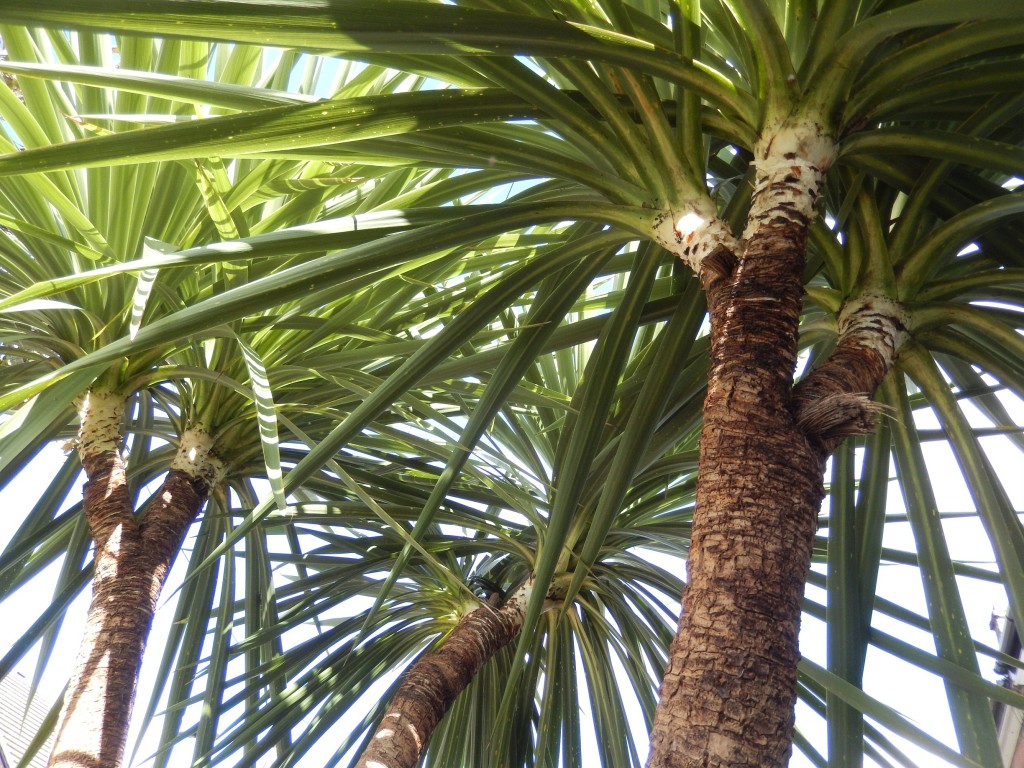
When I moved house, I dug up a small but strong Cordyline that I had planted in the garden, and brought it with me. It was a couple of feet high. I stuck it in the ground and more or less forgot about it: it didn’t seem to do much except grow a little bit taller each year. It had two cylindrical trunks, each of which acquired a few new leaves every year, forming a palm-like tuft. The old leaves remained as a multiple sheath around the trunk until they eventually fell off in a storm or I pulled them off, following the Fibonacci spirals from the bottom up.
About 10 years ago, one of the trunks decided to branch; then the plant settled down again, and the three trunks just crept slowly skywards each year.
Two or three years ago, the plant suddenly put out a flower head, covered in a mass of tiny whitish flowers. The head slowly dried up but did not fall; it was attached to an extremely strong fibrous stalk that emerged in what seemed to be a random way from the tuft of leaves. A year later, another flower head emerged. With difficulty I managed to cut the old flower head off near its base: being left to dry had hardened it, but nothing else.
Now, after this year’s growth and an hour carefully pulling off a lot of leaves from the bottom of each tuft, no fewer than 8 growing points – separate tufts – are visible. And the mystery of where the flower heads come from is revealed: they spring from the angle or axil where a trunk decides to fork into two branches. There’s a nice obvious cut stump of a flower head on the right of the photo.
As well as I can now deduce, the number of growing points went like this :
Year: Tips: Branching events: Flower heads:
1 1
3 2 1
8 3 1
17 4 1 1
18 6 2 2
19 8 2 0 so far
The production of leaves seems to be increasing directly with the number of growing points. The old trunks do seem slowly to thicken, despite giving the impression of growing only at the tip, i.e. there is some secondary (sideways) growth as well as primary growth at the apical meristem. Cordyline is, curiously, a woody monocot, in the Asparagus family.
